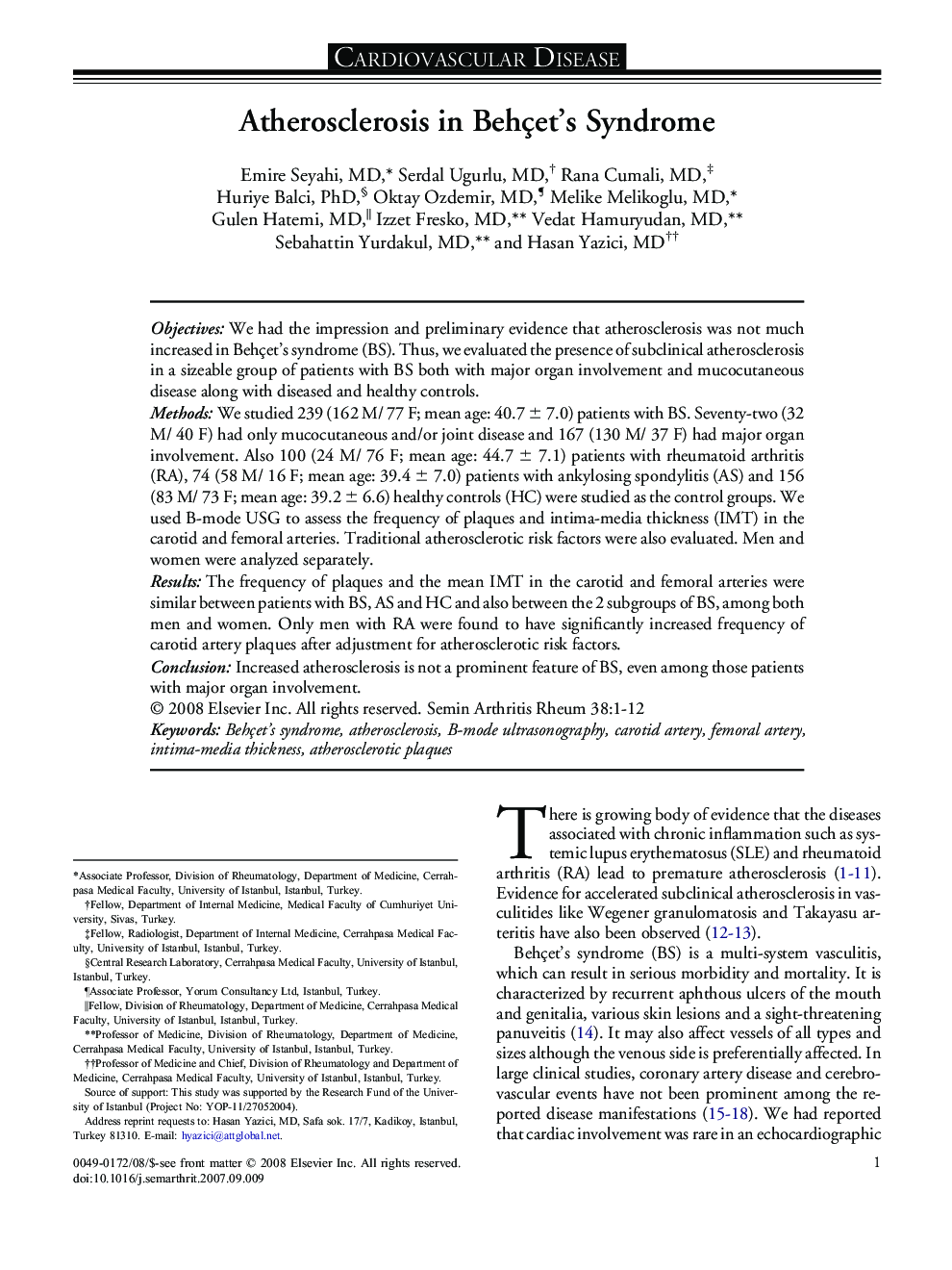| Article ID | Journal | Published Year | Pages | File Type |
|---|---|---|---|---|
| 2771909 | Seminars in Arthritis and Rheumatism | 2008 | 12 Pages |
ObjectivesWe had the impression and preliminary evidence that atherosclerosis was not much increased in Behçet's syndrome (BS). Thus, we evaluated the presence of subclinical atherosclerosis in a sizeable group of patients with BS both with major organ involvement and mucocutaneous disease along with diseased and healthy controls.MethodsWe studied 239 (162 M/ 77 F; mean age: 40.7 ± 7.0) patients with BS. Seventy-two (32 M/ 40 F) had only mucocutaneous and/or joint disease and 167 (130 M/ 37 F) had major organ involvement. Also 100 (24 M/ 76 F; mean age: 44.7 ± 7.1) patients with rheumatoid arthritis (RA), 74 (58 M/ 16 F; mean age: 39.4 ± 7.0) patients with ankylosing spondylitis (AS) and 156 (83 M/ 73 F; mean age: 39.2 ± 6.6) healthy controls (HC) were studied as the control groups. We used B-mode USG to assess the frequency of plaques and intima-media thickness (IMT) in the carotid and femoral arteries. Traditional atherosclerotic risk factors were also evaluated. Men and women were analyzed separately.ResultsThe frequency of plaques and the mean IMT in the carotid and femoral arteries were similar between patients with BS, AS and HC and also between the 2 subgroups of BS, among both men and women. Only men with RA were found to have significantly increased frequency of carotid artery plaques after adjustment for atherosclerotic risk factors.ConclusionIncreased atherosclerosis is not a prominent feature of BS, even among those patients with major organ involvement.
